Browse using the new Vinous website now. Launch →
Printed by, and for the sole use of . All rights reserved © 2015 Vinous Media
2022 & 2023 Barbaresco: Pushed to the Limit
BY ANTONIO GALLONI | OCTOBER 28, 2025
Barbaresco faced two very challenging growing seasons in 2023 and 2022. Quality is inconsistent across the board. These are vintages in which readers will have to be especially selective, but there are some undeniable stars in both years.
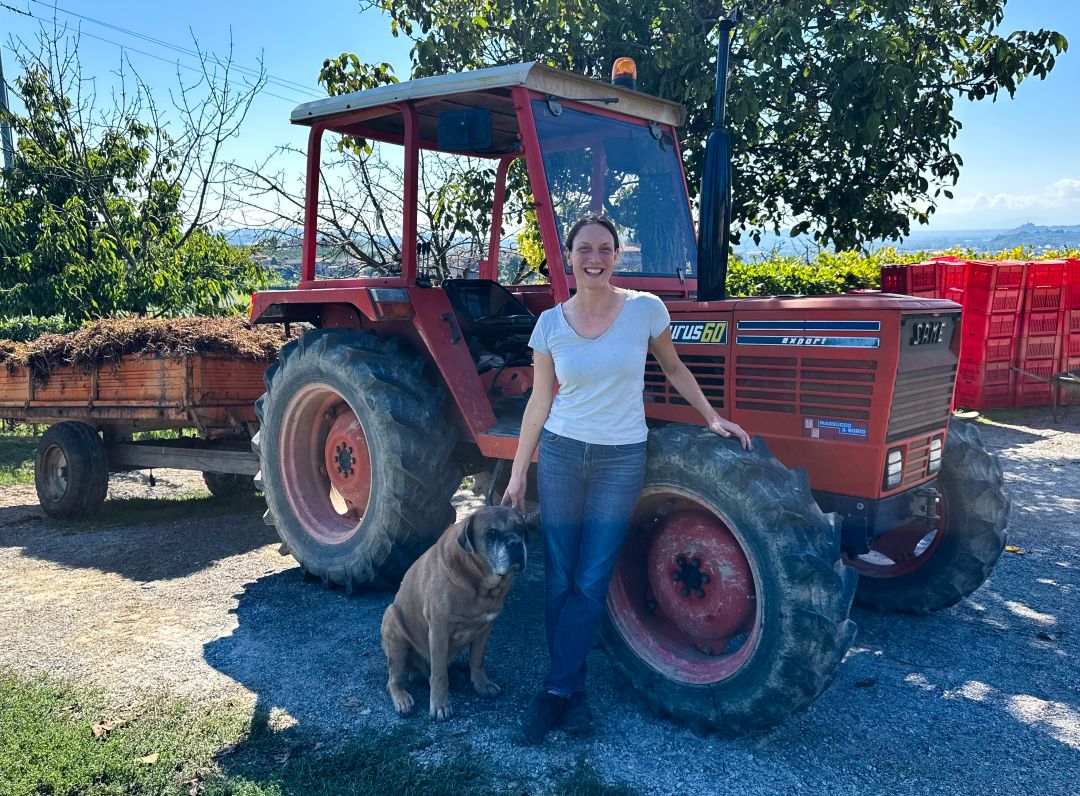
Franca Miretti turned out a stellar set of wines at Cantina del Pino. She is seen here during the 2025 harvest with Kiel, the dog that belonged to her late husband, Renato Vacca.
The 2022 Growing Season & Wines
Two thousand twenty-two pushed growers to the limit. The year was marked by torrid heat and drought throughout the growing season. Conditions remained remarkably consistent through to harvest. Canopies struggled. Producers did what they could, starting by leaving some cover crop, but not enough to compete with vines for water. Deleafing, once a standard practice, was abandoned. Some producers reduced crop loads to give struggling vines the best chance possible to ripen their grapes. A few showers at the end of the growing season provided some relief. All that said, Barbaresco fared remarkably well. In fact, from what I have tasted so far, there is a very good chance 2022 will be better in Barbaresco than in Barolo.
Last year, I wrote, “So far, I am impressed with the 2022s, given what looked like dire conditions during most of the year. Unrelentingly hot, dry weather pushed vines to their maximum. I find the 2022s texturally light, as if ripening just stopped at some point. At the same time, the tannins are pretty soft and much less forbidding than I had expected, given the weather.”
Further tastings of the 2022s confirm those early impressions, although I can now add that the style of the wines varies considerably from estate to estate. Some 2022 Barbarescos are on the lighter side, while others are quite powerful. Not surprisingly, producers interpreted the vintage very differently. The Produttori del Barbaresco will bottle their Riservas, which by mandate requires that all nine wines be produced. Gaja bottled their top selections as well, although in very small volumes. Sottimano, on the other hand, did not bottle any Barbaresco in 2022.
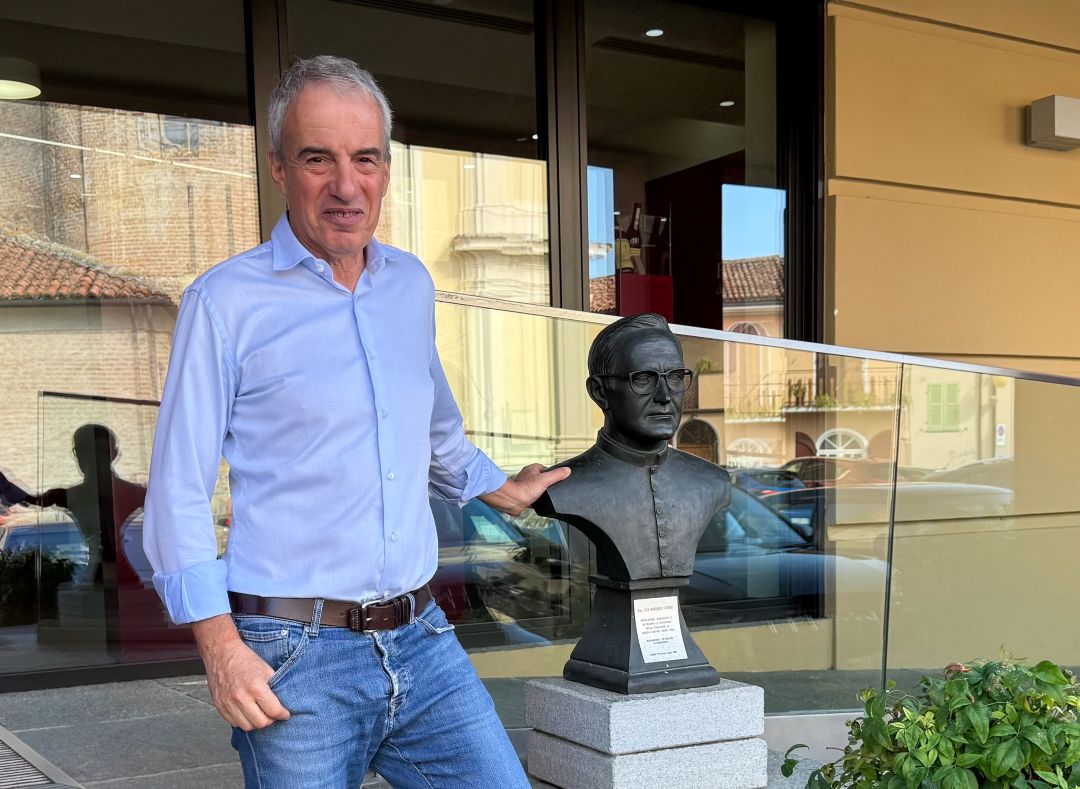
Aldo Vacca, the Produttori del Barbaresco’s longtime Managing Director, is set to retire at the end of 2025. Vacca has taken the Produttori to unprecedented heights of quality and recognition since he arrived in 1991.
“It’s a year with thick skins and low juice yields,” Managing Director Aldo Vacca explained at Produttori del Barbaresco. “Initially, we expected more dilute wines. Instead, drought concentrated the fruit, perhaps at the expense of some of the aromatic complexity of years like 2021 and 2016. Skin-to-juice ratios were high. We used many of the better lots in 2022 for the straight Barbaresco and will bottle a small amount of Riservas.” Gaia Gaja echoed his thoughts. “We think the heat resulted in thick skins that served to protect the juice,” she relayed. “At some point during the summer, the vines stopped ripening and kept a level of acidity that remained through to a harvest that benefited from a bit of rain in mid-August. We bottled all of our single-vineyard Barbarescos, although production is less than half of 2021.” In other instances, producers such as Francesco Rocca at Bruno Rocca and Marco Rocca at La Ca’ Nova saw the vintage having a gentler equilibrium, as witnessed in their decisions to conduct shorter fermentations and macerations.
More than anything else, I am shocked by how much site character the 2022s express. Typically, intense heat and drought bake out vineyard signatures. That is not at all the case with the 2022s. Naturally, the wines don’t reach the profound levels of years like 2016 or 2021, but they put in a more than respectable showing in this very critical area.
On paper, 2022 looks something like 2003, and yet the wines could not be more different. I suspect growers have become more accustomed to extreme heat and drought over the last two decades, just as they have become gentler in their farming and winemaking practices. “I think a lot of us learned from 2003,” Giorgio Rivetti opined at La Spinetta. “We did not deleaf, we dropped crop so that the vine had a chance to ripen its fruit, and we benefited from anti-hail netting, which also protected the grapes.” This last point is important and may not be obvious, because the netting, originally installed to protect against damage from hail, is now also being used as shade cloth, a tool that is common in other regions around the world, most notably Napa Valley, where it has made a significant difference in today’s climate-change-challenged world.
In the cellar, producers opted to ferment on the cooler side. Time on the skins, including submerged cap maceration (where practiced), was lower than in the very best years. Many producers also opted to slightly shorten time in barrel. The result is a vintage of generally soft wines of irregular quality, but that also features a handful of true standouts. For all but a few wines, 2022 looks like a vintage for near- to medium-term drinking.
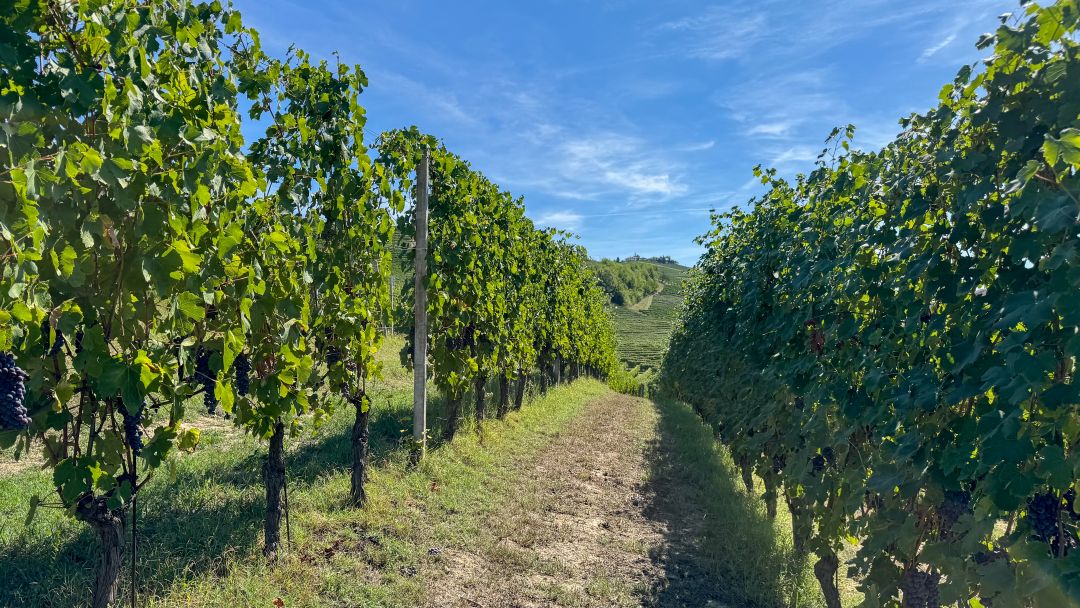
Walking through Fiorenzo Nada’s Rombone vineyard just prior to the 2025 harvest.
A Deeper Dive on 2022: What Makes a Great Barbaresco Vintage?
Over the last few years, I have shared a template for a model of what I think makes a great vintage in Barolo and Barbaresco. It is, of course, the sum of everything I have learned from many people, organized in a way that I think makes sense. Unlike Bordeaux, Piedmont does not have an established framework for what constitutes a high-quality, important vintage. Clearly, many people have views, but I have never seen them codified. What follows is my set of objective criteria necessary for a Barolo or Barbaresco vintage to be considered truly great. This framework is inspired by the late Denis Dubourdieu and the model he developed for assessing Bordeaux vintages. To that, I add my 20-plus years of visiting Piedmont and all the data I have collected in speaking with winemakers, agronomists and other professionals over that time, plus drinking more than my fair share of the wines. As with Dubourdieu’s model, this addresses the growing season and does not venture into an assessment of the actual wines.
Indeed, this model was created in the present day. It won’t apply as well to vintages from previous eras, especially vintages from the 1950s-1970s. At that time, warm weather was considered quite favorable because grapes struggled to ripen. The warmest vineyards, those that faced due south, the famous sorís, were the most coveted. Today, you would be hard-pressed to find a producer who believes that south-facing vineyards are the most ideal. Last but certainly not least, with its varying elevations, myriad exposures and different soil types, Piedmont is inherently complex. In short, Piedmont is not a region that is intrinsically well suited to generalizations. Even so, some information is better than none.
1. A Long Growing Season — A long growing season, defined as the period from bud break to harvest, is essential for achieving full physiological ripening of the fruit, skins and seeds. Since Nebbiolo is already a very tannic grape, less-than-full physiological ripeness is heavily penalizing. The 2022 growing season was marked by extreme heat and drought the entire year. Producers left as much leaf cover as possible and dropped fruit where they could in an effort to keep the plants stable. Harvest was not shockingly early, given the conditions. Nevertheless, unprecedented hot temperatures and lack of water mean that the first condition was not met.
2. Diurnal Shifts — The final phase of ripening must be accompanied by diurnal shifts, in other words, swings in temperature from warm days to cool nights. Diurnal shifts create aromatic complexity, full tannin and flavor development and color. Evening temperatures did not cool down materially in the weeks before harvest. Thus, the second condition is not met.
3. The Absence of Shock Weather Events — Frost and hail can severely and irreparably damage the crop. Similarly, periods of uninterrupted elevated heat can block maturation. The entire 2022 growing season can be defined as a shock event, one marked by consistently hot temperatures and drought, saved only somewhat by water reserves from the prior year. The third condition is not met.
4. Stable Weather During the Last Month — The last month of the growing season makes the quality of the vintage. The weather during this critical period of ripening did not present any material changes from what was seen throughout the year. Conditions remained hot and parched, but stable. Thus, the fourth condition is partly met.
5. A Late Harvest — Harvest must take place in October (possibly late-September in some areas), with the final phase of ripening occurring during the shorter days of late-September and October, as opposed to the longer, hotter days of August. Most producers picked in the middle of September through to October. Harvest was early for many estates, but not as early as conditions might have suggested. The fifth condition is partly met.
In conclusion, none of the conditions required for a good-to-great vintage were entirely met. Not surprisingly, the average quality of the wines is highly irregular.
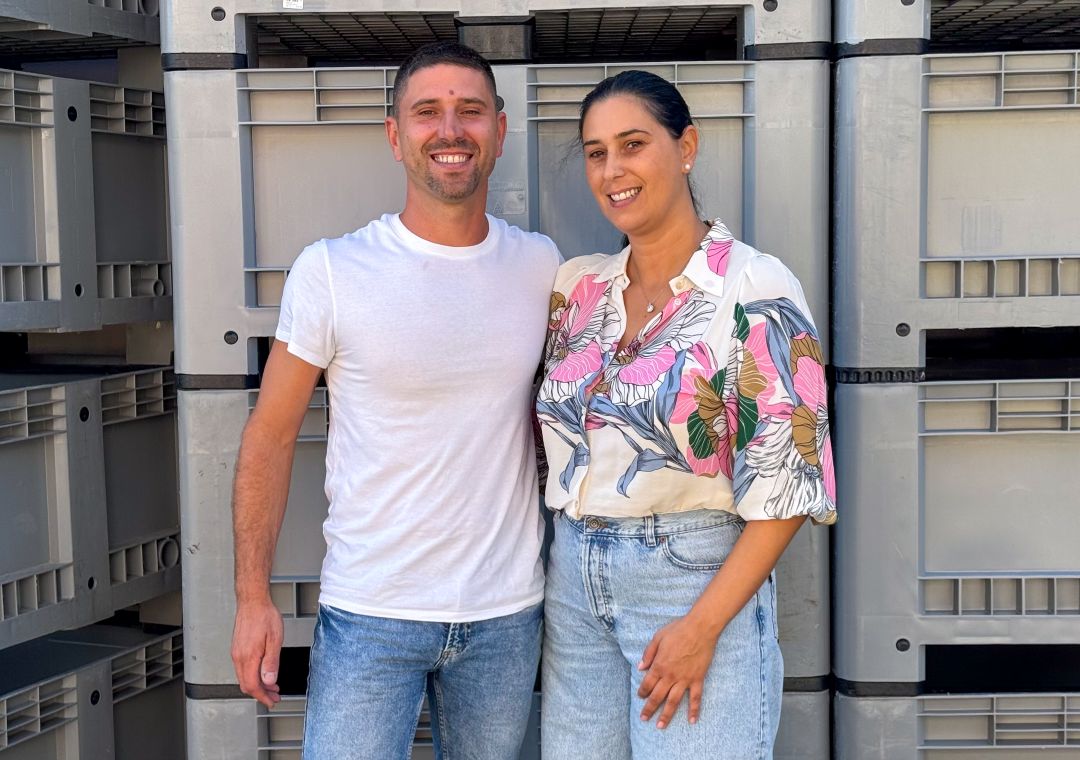
Francesco and Luisa Rocca presented a stellar set of wines at the estate founded by their father, Bruno Rocca. They are among the most dynamic producers in Barbaresco today.
2023 Barbaresco: A Vintage in Two Acts
Growers were treated to a whole different set of challenges in 2023. The year was marked by consistent rain in May and June, which led to elevated disease pressure. “In the last ten years, June has become the most critical month of the year,” Andrea Sottimano explained. “It decides everything. In some years, we get a lot of rain, in other years, rain is more evenly distributed. The trick was to treat the vines early, in the spring and early summer, when we had a period of consistent rain, using natural products that protect the grapes and skins without altering their fundamental chemistries. The challenge was getting to flowering in good shape. After that, it was easy. We did not de-leaf and left normal yields on the vine to extend the ripening season as long as possible to protect the vines during the intense heat of the summer.”
A swath of hail on July 6 hit spots from Alba to Torino, lowering yields and also setting up some vines for reduced production in 2024. From there, conditions turned much warmer, especially during August, which saw 20 days of uninterrupted heat. Harvest was seven to ten days earlier than the norm. In tasting, the 2023s come across as mid-weight wines with a good bit of early and medium-term appeal. I generally find the tannins riper and more polished than in 2022, suggesting the growing season offered better conditions for physiological ripeness. Some wines show structural qualities that are consistent with elevated yields, while others are deeper and more expressive. Thus far, 2023 appears to be another vintage defined by irregular quality.
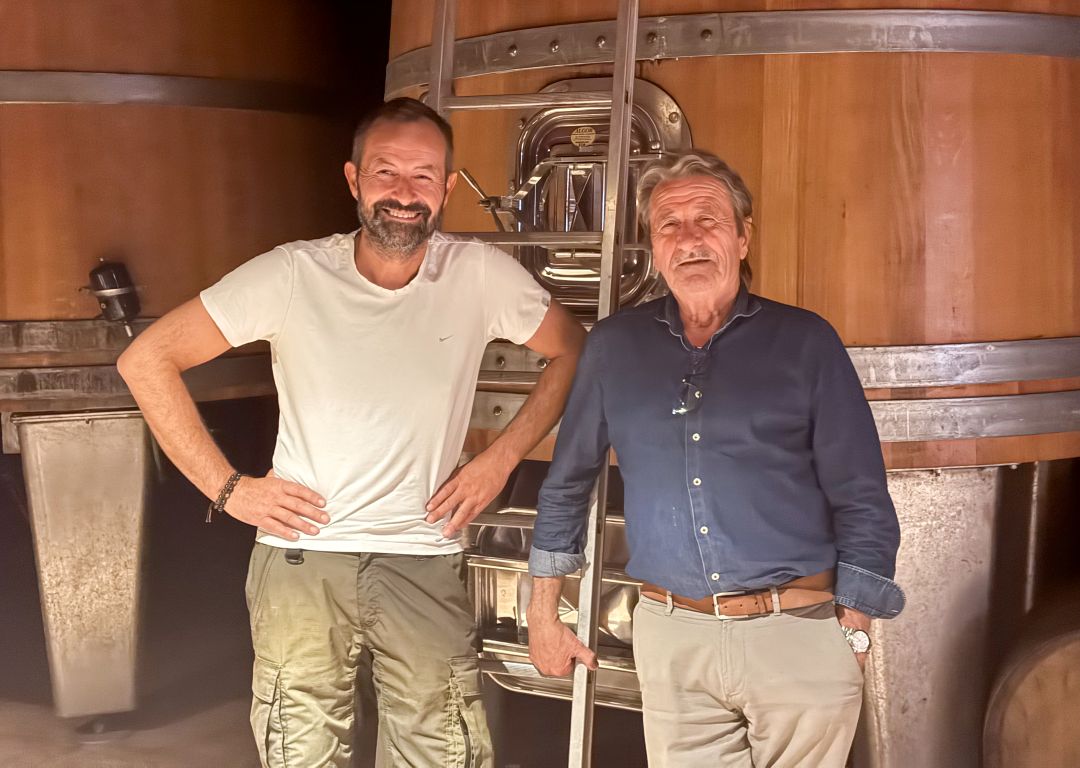
Andrea and Rino Sottimano in their cold cellar in Neive. Their 2023 Barbarescos are superb.
In Appreciation of Dolcetto, Barbera & Langhe Nebbiolo
Dolcetto, Barbera, Langhe Nebbiolo and other entry-level bottlings are the foundational wines of Piedmont because they remain accessible to a wide audience of consumers. These bottles provide terrific entry points for wine lovers who want to learn more about the region and its growers, especially younger consumers. They are also the wines that locals drink. This report includes entry-level offerings from many properties, something I have started to do to provide a complete look at top estates rather than culling out entry-level wines for a separate article. Dolcetto, Barbera, Langhe Nebbiolo and other reds are obviously not perfect substitutes for Barbaresco, but the best wines offer superb value and character to match.
Many new releases are 2024s, a tricky year with rain during harvest. The 2024s are generally light-bodied, aromatic wines with lower alcohols than the norm today. Nebbiolo seems to have fared best among Piedmont’s indigenous red varieties. Dolcetto was impacted by a sudden burst of cool weather before harvest, while Nebbiolo was able to hang through the rain. Readers will find much more specific context within the accompanying reviews and producer commentaries, as this is yet another vintage to approach on a wine-by-wine basis.
Roero: Barbaresco’s Next Door Neighbor
This report includes a handful of wines from Roero, which lies just across the Tanaro River from Barbaresco. Every year, I taste quite a few wines that are interesting, but not enough producers to merit a full and separate report, hence their inclusion here. In prior generations, Roero was where producers from Barolo and Barbaresco came to buy grapes. For many years, the best wines were made by producers from those areas, like Luciano Sandrone and Bruno Giacosa with their Nebbiolo d’Albas from Valmaggiore. A newer, younger generation took over in the 1990s, determined to compete with the more famous wines of their neighbors. Many producers sought to make big, powerful wines. It was a natural choice at a time when wineries struggled for recognition. But most of Roero is planted on sandier sites that are naturally suited to a more refined style of wine. Today’s young winemakers have made important strides in a move to exalt the natural characteristics of their sites, making Roero an up-and-coming region that increasingly deserves attention.
I tasted all the wines in this report during a visit to Barbaresco in September 2025, along with a few follow-up tastings in our New York offices.
© 2025, Vinous. No portion of this article may be copied, shared or redistributed without prior consent from Vinous. Doing so is not only a violation of our copyright but also threatens the survival of independent wine criticism.
You Might Also Enjoy
Barbaresco: The Stellar 2021s & Surprising 2022s, Antonio Galloni, October 2024
Barbaresco’s Soaring 2020s & 2021s, Antonio Galloni, October 2023
Piedmont Within Reach, Antonio Galloni, December 2022
Focus on Barbaresco – A Close Look at 2019 & 2020, Antonio Galloni, October 2022
2018 & 2019 Barbaresco Take Center Stage, Antonio Galloni, February 2022
Show all the wines (sorted by score)
- Ada Nada
- Adriano Marco e Vittorio
- Albino Rocca
- Bruno Giacosa
- Bruno Rocca
- Ca' del Baio
- Cantina del Pino
- Carlo Giacosa
- Ca' Rome'
- Cascina Baricchi
- Cascina delle Rose
- Cascina Luisin
- Cascina Morassino
- Cascina Vano
- Castello di Neive
- Cecilia Monte
- Cocito
- Damonte e Secchi
- De Forville
- Fiorenzo Nada
- Fletcher Wines
- F.lli Cigliuti
- Francesco Versio
- Gabriele Cordero
- Gaja
- Giorgio Pelissero
- Giovanni Almondo
- Giuseppe Cortese
- Guido Rivella
- La Ca' Nova
- La Ganghija
- Lano Gianluigi
- La Spinetta
- La Spinona
- Lodali
- Malvirà
- Manuel Marinacci
- Marchesi di Grésy
- Matteo Correggia
- Moccagatta
- Paitin
- Piero Busso
- Produttori del Barbaresco
- Rizzi
- Rocca fu Battista
- Serafino Rivella
- Socré
- Sottimano
- Valfaccenda
